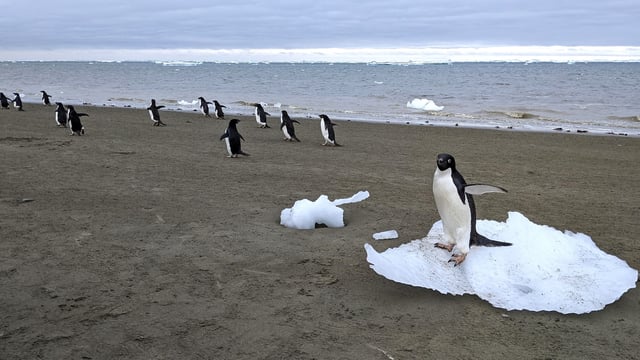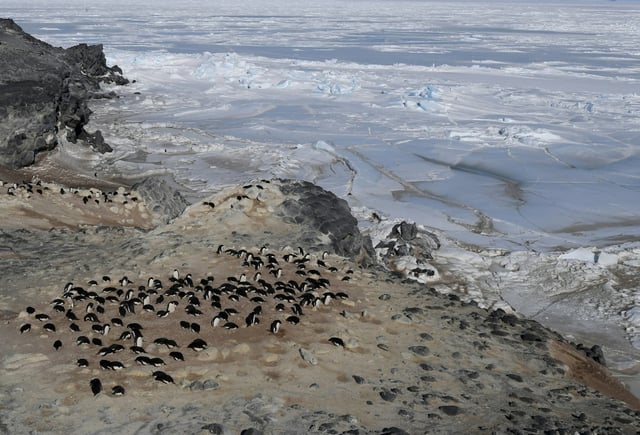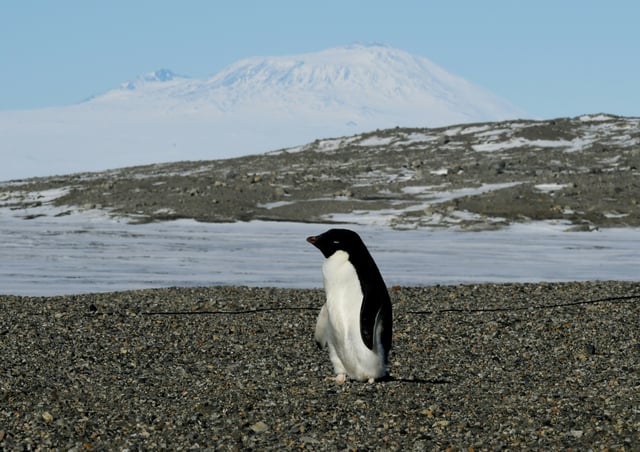Overview
- A study published in *Communications Earth & Environment* confirms that ammonia from Adelie penguin guano significantly increases aerosol formation, promoting cloud cover in coastal Antarctica.
- Researchers recorded ammonia concentrations spiking to over 1,000 times the baseline when winds passed over a 60,000-penguin colony near Marambio Base during early 2023 field measurements.
- Ammonia emissions persisted at more than 100 times baseline levels even after the penguins migrated, as guano on the ground continued to release the gas.
- Ammonia reacts with sulfur gases from ocean phytoplankton to create aerosols, which seed clouds that may help regulate local temperatures and slow sea ice loss.
- The findings emphasize the critical role of penguins in Antarctic climate processes and warn that declining populations could weaken this natural cooling mechanism, accelerating warming in the region.



